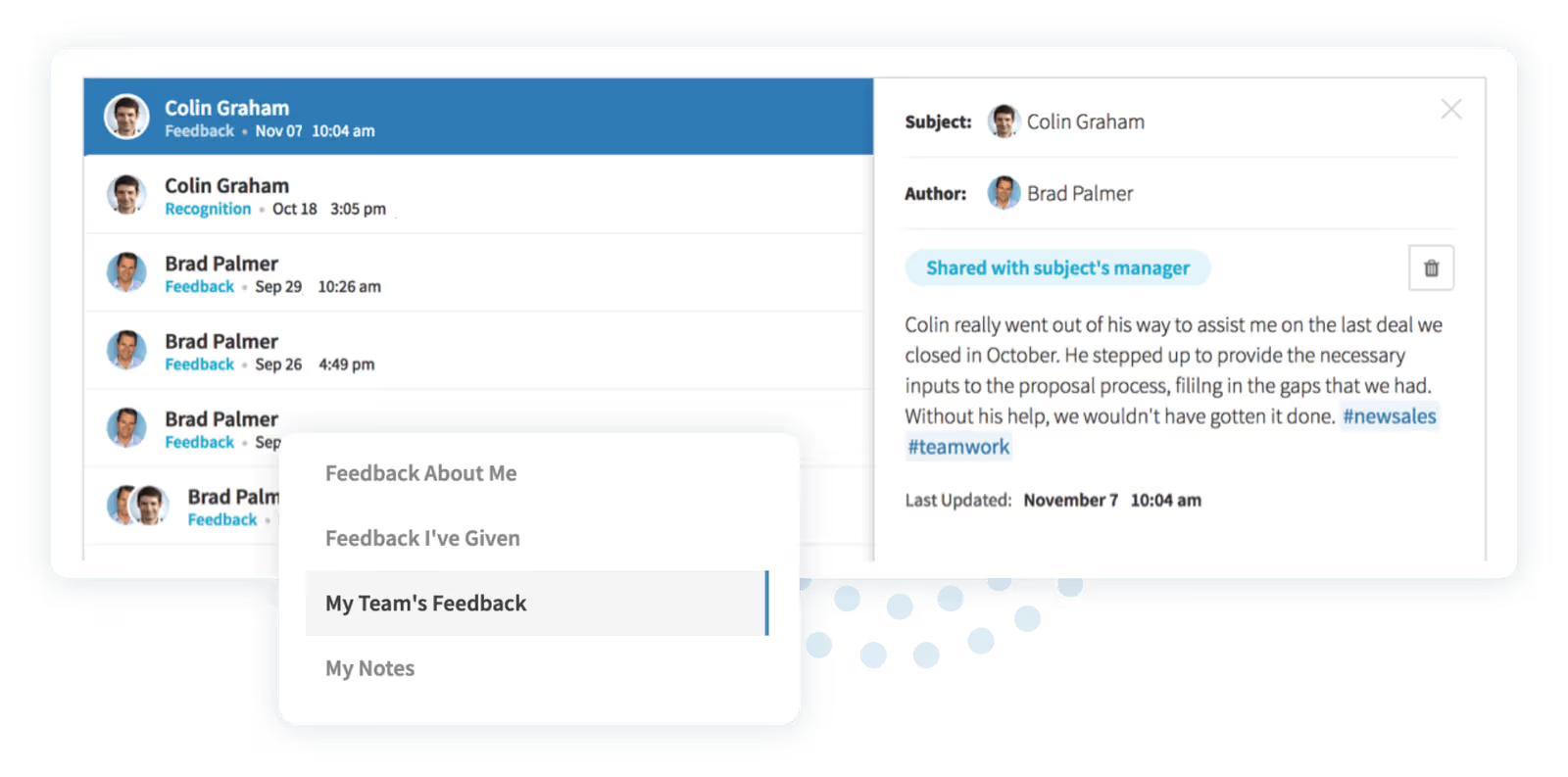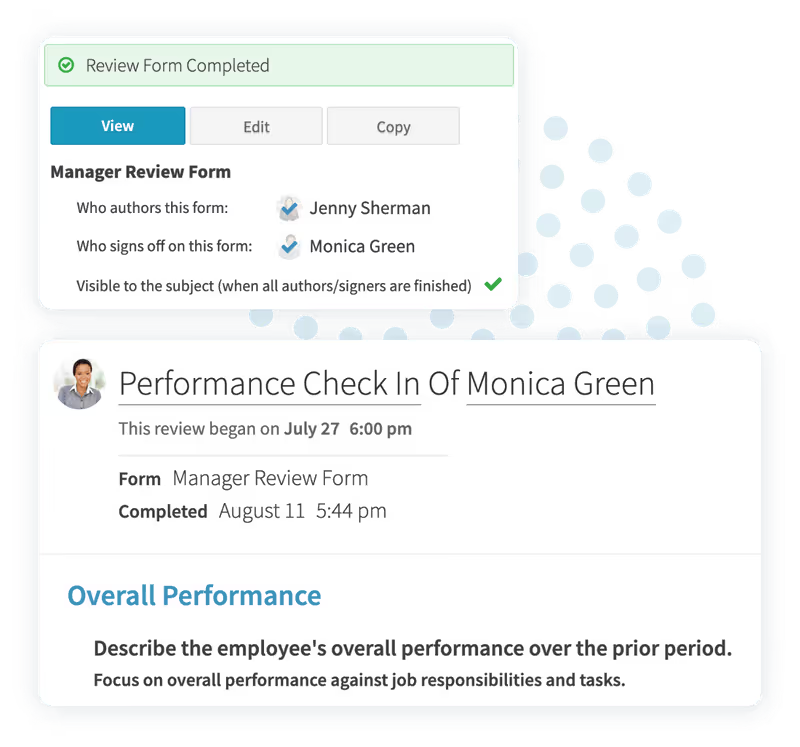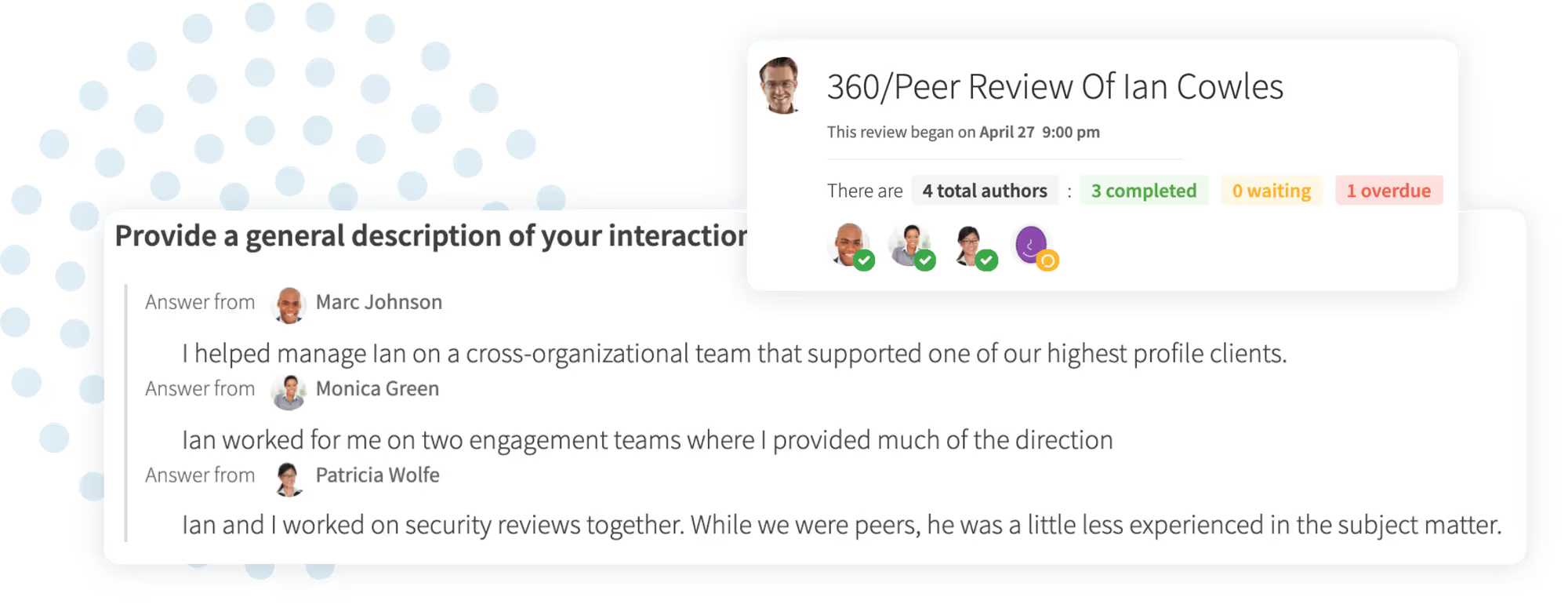Top Tips for Running a Project Manager Performance Review
Saying that project management is important is an understatement.
Regardless of the industry, every project hinges on the project manager. They have to outline expectations, keep team members on track, and get everyone to contribute to their highest ability.
When project managers have such a big impact on the projects they manage, it makes sense that competent professionals are in high demand. The US Bureau of Labor Statistics estimated that there are over 1.2 million project management specialists in the US.
That’s a lot of positions, making it easy for your project managers to shop around if they don’t feel satisfied with their role.
Don’t lose your project managers to other companies that are willing to compensate them according to their performance. Make sure you provide them with a meaningful project manager performance review process. The process should help you recognize their contributions and make them want to stick around.
Quantitative Measures for a Project Manager Performance Evaluation
Tracking quantitative data will tell you a lot about your project managers. First, you have to know what kind of data to track. Then you need a dedicated performance management platform capable of tracking those goals.
Here are our top quantitative measures to add to each project manager performance review:
- Percentage of projects delivered on-time
- Percentage of projects delivered under budget
- Customer satisfaction rating on projects
Percentage of projects delivered on-time
Timely project completion impacts your bottom line. It’s also a sign that your project manager is organized and values adhering to expectations. That’s why it's an important point to add to any project manager performance review.
You can measure on-time project completion with a performance management platform. Most project managers run between two and five projects simultaneously. That’s why it’s important to document exactly when each project is complete. That way, you have an exact completion date for each project when review time rolls around.

Percentage of projects delivered under budget
When figuring out how to evaluate project manager performance, it’s a good idea to look into how much each project ends up costing. That requires you to get clear about the overall cost, but it also requires you to know exactly how much different aspects of the project cost. That way, if the project cost goes over, you know by how much and what portion of the project caused the cost to balloon above budget.
By keeping track of the cost of each aspect of the project, you can also get crystal clear about what areas came in under budget. That way the project manager can receive the accolades they deserve. Plus, you can compensate your project manager for staying under budget.
It’s best to outline the cost of each project before it starts and keep track of costs as the project progresses. Add real-time data to a performance management system instead of scrambling after the project is done.
Customer satisfaction rating on projects
You have a few different options when it comes to measuring customer satisfaction:
- Customer feedback comes through email surveys, social media, and one-on-one interviews.
- Review site ratings show up through Google online reviews, Amazon, Yelp, G2, TrustRadius, and more.
- Satisfaction scores measure customer satisfaction on a scale from unsatisfied to satisfied.
- NPS scores measure customer satisfaction according to a numerical scale from one to ten
Focus on the scores that make sense for your business. For example, if you serve a small client base, you might want to use satisfaction and NPS scores. Maybe your products or services serve the masses. In that case, check review site ratings or send out a survey to customers.
Qualitative Measures for a Project Manager Performance Review
Qualitative points are more difficult to measure than quantitative ones, but they are no less important. They can provide you with great insights if you get laser-focused on what you’re measuring and how to measure it.
A few ideas include:
- Did they improve processes?
- Did they coordinate with team members well?
- Did they handle roadblocks well?
Did they improve processes?
Measuring process improvement means measuring initiative. Employees who take initiative can lower costs and save time. Plus, project managers want you to measure initiative. 85% of employees say they are encouraged to take more initiative when they receive feedback in the workplace.
Getting continuous feedback from team members is vital to measuring this metric. What does the project manager do to make their job easier? Is there anything they changed or are doing differently that is impacting the current project positively? You could also ask the project manager what they have done to improve processes. Make sure they gather supporting evidence for their claim.
Getting real-time answers to these questions provides you with accurate, meaningful feedback. A performance management system ensures that feedback is available when the next review cycle rolls around.
Did they coordinate with team members well?
Good project managers foster an environment of high achievement. Project manager coordination is the foundation of a high-achieving team.
The best way to get at this metric is to talk to members of the team directly. Collect continuous feedback throughout each project. Ask employees to comment on the project manager’s communication and ability to iron out expectations.
When you collect this type of feedback continuously, you can use it to create feedback for your project managers too. Sample feedback for a project manager could include what team members had to say and what could be done better.

For example, team members may appreciate how quickly they receive answers to their questions. They may also feel like they get too many irrelevant emails. During a review, project managers could be complimented on their ability to answer questions promptly. Then, they might be asked to avoid using team-wide emails and instead focus on sending emails to relevant parties only.
Did they handle roadblocks well?
Challenges come up in every project. A good project manager should know how to handle these roadblocks. Measuring this can help you figure out how well a project manager handles stress. It can also tell you how much stress they pass on to their team.
Like many of the other ideas on this list, this one requires continuous feedback so the data is there when you need it at review time. Get feedback from team members on the roadblocks that came up during a project. How were they were handled? The project manager should also do a self-assessment. There are aspects of a project that they may have worked through that management and other team members didn’t pick up. This could show that the PM was proactive about solving the problem.
Creating a Review Cycle for Project Managers
The content in a review is important, but the type of review you conduct is important too. Review cycles should focus on the specific roles your employees have. This will help employees get high-value information out of the process.
When creating a review cycle for project managers:
- Consider using project-based reviews
- Don’t forget about the annual review
- Consider using 360 peer reviews
- Consider using team-based reviews
Consider using project-based reviews
One of the best choices for project managers is project-based reviews. Every project comes with its own set of challenges and wins that can get lost in the shuffle if you only focus on feedback at an annual review.
Project-based reviews allow PMs, teams, and management to gather information after each project. Project managers don’t have to wait until the end of the year to make important changes or receive recognition for their work.
Reviews should take place after each project using a flexible software system like PerformYard. The software ensures the review process goes smoothly. It stores feedback and goals for analysis come review time. This is a great way to compare projects over the long run.
Don’t forget about the annual review
A comprehensive project manager performance review process should include multiple types of reviews. Each review will help to paint a more complete picture of performance. You might use project-based reviews to dig into the details of each project so you can make adjustments promptly. Then, you might use annual reviews to measure a project manager’s performance across multiple projects.
Some measures, like the percentage of projects delivered on time and under budget, can only be taken with the wide view an annual review allows. That’s why it’s important to customize a review process that works for your team instead of choosing just one type of review and rolling with it.

When you combine an annual review with other types of reviews, you'll find that it's more valuable. Annual reviews are more valuable when they’re a culmination of information collected throughout the year. That information can include:
- Feedback from colleagues
- Project-based reviews
- Goal completion
- 1:1s and check-ins
This information should be part of your performance management process throughout the year. It will give you a wealth of information to pull from ahead of an annual review.
Consider using 360 peer reviews
Another favorite project manager performance review template is the 360 peer review. That’s because it includes input from the team members being managed by the project manager. The 360 review can also include other people the project manager interacts with regularly. Those groups might include people from management and other project managers. You can incorporate information from 360 peer reviews into both project-based and annual reviews.
Project manager performance is dependent on how they work with other people. That makes 360 reviews essential.
That said, the 360 review does come with its own unique set of challenges. There are a lot of people involved in the process. The sheer number of inputs can make the process time-consuming if you’re using paper or spreadsheets.

Everyone can enter their data directly into your dedicated performance management software. From there, the data is aggregated into a single report. You can even set automatic reminders for everyone to contribute.
Consider using team-based reviews
360 peer reviews can give you a good picture of how a project manager works with multiple teams. They also show insights into their interactions with other employees. If you’re looking for a more in-depth look at how a manager works with their team, consider a a team-based review.
Like 360 reviews, team-based reviews require performance management software. You’ll need a system that enables you to collect information from every team member, including the project manager. You can then use that data to measure the performance of the team as a whole. You won’t have to look at any one team member individually.

